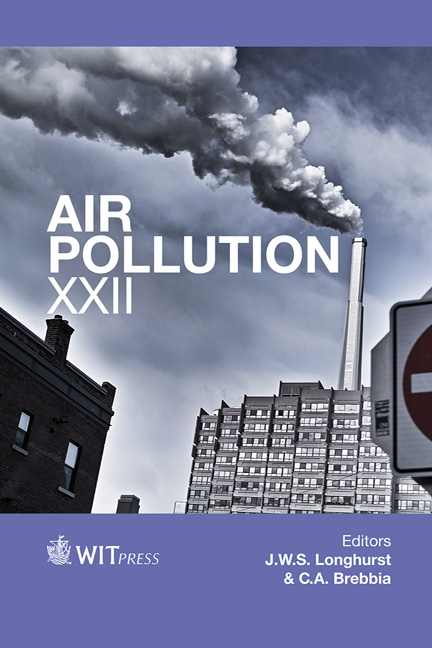Diurnal Variation And Vertical Distribution Of Carbonaceous Aerosols In The Southern Part Of Thailand
Price
Free (open access)
Transaction
Volume
183
Pages
12
Page Range
63 - 74
Published
2014
Size
731 kb
Paper DOI
10.2495/AIR140061
Copyright
WIT Press
Author(s)
S. Pongpiachan, S. Pongnailert, K. F. Ho & J. Cao
Abstract
Carbonaceous compositions, water-soluble ionic species and trace gaseous species were identified and quantified in Hat-Yai city, Thailand. All samples were collected every three hours consecutively from 21:00 h December 17th to 21:00 h December 20th at Site 1 (30 m agl), Site 2 (60 m agl) and Site 3 (125 m agl). The averaged concentration of OC was significantly higher at Site 1 than those detected at Site 2 and Site 3 suggesting that anthropogenic activities at ground level might play a major role in governing air quality at ground level. The main objective of this study is to investigate the vertical distribution of carbonaceous aerosols in Hat-Yai’s atmosphere for the first time by using IMPROVE TOC (Interagency Monitoring to Protect Visual Environments Total Organic Carbon) protocol. The morning peak of carbonaceous compositions observed during the sampling period of 06:00–09:00 emphasized the main contribution of traffic emissions on OC/EC contents in Hat-Yai city. In this study, we found that aged maritime aerosols from long-range transportation and/or biomass burning particles overwhelmed carbonaceous aerosols at the top of building. Whilst hierarchical cluster analysis and Pearson correlation analysis show some considerable influences of night-time tourism activities on carbonaceous contents at ground level, principal component analysis highlights the impacts of maritime aerosols, biomass burning and possibly agricultural waster burning particles at a higher atmospheric layer.
Keywords
carbonaceous aerosols, vertical distribution, tropical climate, principal component analysis, hierarchical cluster analysis.





